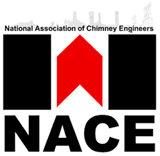Building Regs / Doc J
DTLR Approved Document J – Building Regulation changes for chimneys, flues and combustion appliances.
From April 1st there are new Building Regulations for section J. This section relates to the construction, and maintenance of chimneys and flues and now includes fuel storage systems. The changes to this section are numerous and complicated and will require those involved in this work to study the Approved Document (ADJ), which now has 70 pages compared with the 13 pages of the original. The additions in the ADJ include a whole new section on the storage of liquid fuel, but there are differences in all sections and there is now an additional guidance document available to assist in the interpretation of the Approved Document!
Two issues that affects every one involved in the construction and maintenance of chimneys are the requirement for the ‘Provision of information’. ADJ paragraph 1.56 and diagram 1.9 gives details of the information that must be left on site in the form of a ‘notice plate for hearths and flues’. A notice plate must be durable and be fixed on site, where a hearth, fireplace flue or chimney is provided or extended (including cases where a flue is provided as part of refurbishment work). ADJ states that the responsibility for achieving compliance with the requirements of Part J rests with the person carrying out the work and so this person must be competent in the work they are being asked to do. It is now the responsibility of this person to draw up a report showing the materials and components installed and that the completed flue has passed the appropriate tests. The tests to be carried out are described in Appendix E of ADJ and they vary according to the grading or designation of the flue. In Appendix A of the ADJ there is a suggested check list and report format to record the details of the installation, its components and the test results. An individual who will be the responsible person for this flue must sign this report which becomes a legal document. There is also the requirement for all works on flues to require building control approval, this includes the relining of flues and the installation of liners as a part of an appliance installation.
There is a Competent Persons Scheme available to those who are members of the relevant government recognised bodies. At the time of writing these are: CORGI for gas installations (and the associated flexible flue liners); OFTEC for oil installations (and the associated flexible liners); and HETAS for the installation of solid fuel appliances. Solid fuel appliances are installed to chimneys and often required other liner types besides temporary Stainless Steel and so HETAS has reached an agreement with the National Association of Chimney Engineers (NACE). NACE has developed, under the umbrella of HETAS, a Competent Persons Scheme for the installation of flue liners and chimneys using other products. This scheme is run by NACE and the quality control system is overseen by HETAS. The advantage of belonging to a Competent Persons Scheme is to avoid the need to apply for building control permission for the work for which you are registered, but you must still comply with the relevant regulations and provide a notice plate and report.
The full document may be obtained at:
http://www.planningportal.gov.uk/uploads/br/BR_PDF_ADJ_2002.pdf


